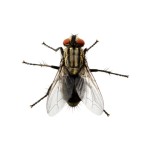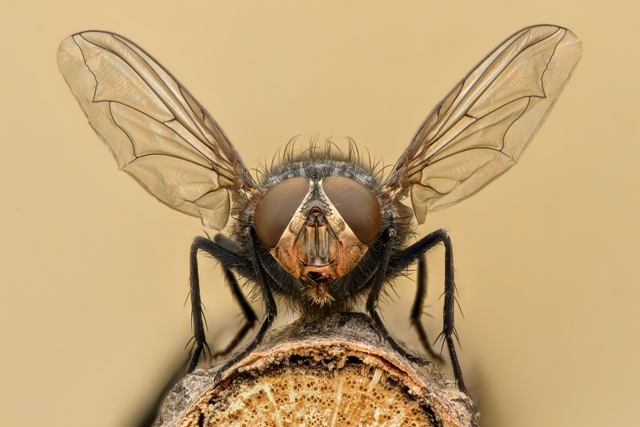 Filth flies are more than nuisance. They carry and transmit diseases causing pathogens and they can contaminate food and beverages. Filth flies are attracted to the food by their senses of smell; however adults cannot eat solid food. When feeding they regurgitate saliva on the food to digest and liquefy it before they suck it up. It is the filth habit of regurgitating on the food that contaminates food and transmit pathogens.
Filth flies are more than nuisance. They carry and transmit diseases causing pathogens and they can contaminate food and beverages. Filth flies are attracted to the food by their senses of smell; however adults cannot eat solid food. When feeding they regurgitate saliva on the food to digest and liquefy it before they suck it up. It is the filth habit of regurgitating on the food that contaminates food and transmit pathogens.
Common Structure Infesting Flies in Canada
Drain Fly
Latin Name: Family Psychodidae
Appearance: About 1/16-inch long with a light gray or tan body and lighter-colored wings. The body and the wings are covered with long hairs, giving the fly a fuzzy appearance. When at rest, the wings are folded over the body in a characteristic roof-like manner.
Habit: In homes, adults are found on bathroom, kitchen or basement walls or close to breeding sites. Do not bite and, surprisingly, do not transmit pathogens, it is more of a nuisance.
Diet: Organic matter and sewage.
Reproduction: Eggs are laid in irregular masses almost anywhere decomposing organic materials are found such as garbage bins, plumbing fixtures (drains), and garbage disposal units, any area where organic material is decomposing. Under favourable conditions, the flies can go through one generation in as little as one week. Two to three weeks is more typical.
Fruit Fly
Latin Name: Drosophila spp
Appearance: Adults are approximately 1/8-inch long, with red eyes and tan thorax. Their abdomen is black on top and gray underneath.
Habit: Adults are strong fliers and have been known to travel as far as six miles within a 24-hour period. Populations tend to build during the summer, becoming very abundant at harvest time. Indoors, fruit flies are active through the year.
Diet: Fruit flies are attracted to ripened fruit and vegetables, as well as fermenting products.
Reproduction: Larvae develop in moist areas such as fermenting fluids, fruits, vegetables, fecal matter, and various decaying organic material. Depending on environmental conditions and food availability, the life cycle of the fruit fly can be completed in 10 to 14 days.
House Fly
Latin Name: Musca domestica
Appearance: Usually gray, less than 1/4-inch long with four black stripes on the thorax.
Habit: They prefer corners and edges or thin objects to rest on. Indoors, they rest on floors, walls and ceilings during the day. Outdoors, they will rest on plants, the ground, fence wires, garbage cans, etc. Night resting places are usually near sources of food and 5 to 15 feet off the ground.
Diet: Wide variety of food, including human food, animal food and carcasses, garbage and excrement.
Reproduction: House fly eggs are laid in almost any warm, moist material that will supply suitable food for the larvae such as manure, garbage and any decaying organic material. The female begins laying eggs a few days after hatching, laying a total of five to six batches of 75 to 100 eggs. In warm weather, eggs hatch in 12 to 24 hours.
 Phorid-Humpbacked Fly
Phorid-Humpbacked Fly
Latin Name: Family Phoridae
Appearance: Most are black or dull brown, but some are yellowish in color. Very small – 1/16- to 1/8-inch. The arched thorax of the adult gives them a humpbacked appearance.
Diet: Some species feed on fungi.
Reproduction: Larvae develop in moist areas where organic materials are present. Phorid larvae also develop in animal matter. The entire life cycle lasts 25 days or more, depending on the environmental conditions and the availability of food.

